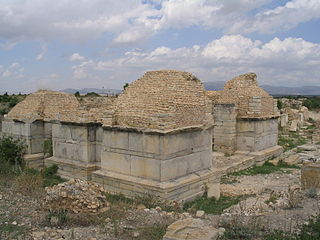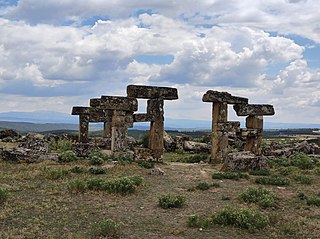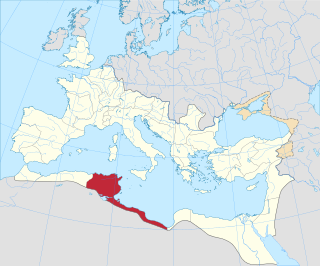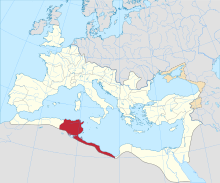
Djelfa is the capital city of Djelfa Province, Algeria and the site of ancient city and former bishopric Fallaba, which remains a Latin catholic titular see.
Ruspe or Ruspae was a town in the Roman province of Byzacena, in Africa propria. It served as the episcopal see of Saint Fulgentius of Ruspe. It is now a Roman Catholic titular bishopric.

Segermes is an ancient town in Tunisia. Under the Roman Empire, the town belonged to the province of Byzacena. The town is identified with ruins at Henchir Harat, Zaghouan.
Zaliche or Zaliches (Ζαλίχης) was an ancient town in the late Roman province of Helenopontus.

The city of Blaundus was the seat of a bishopric in the Roman and Byzantine era. It was a suffragan of the Metropolitan Archdiocese of Sardes, also in Lydia. It was part of the Patriarchate of Constantinople and was suffragan of Archdiocese of Sardis.

Blaundus was a Greek city founded during the Hellenistic period in Asia Minor, presently Anatolia, and is now a Latin Catholic titular bishopric.
Nicives, identifiable with N'Gaous in Batna Province, Algeria, was an ancient Roman town of the Roman province of Numidia.
Rotaria was an ancient Roman and Byzantine era bishopric of Numidia, North Africa.

Thagamuta was a Roman–Berber city in the province of Byzacena. The location of the town is not definitively known, but it was on the plain of Guemouda in modern Tunisia.

Simidicca was a Roman era civitas of the Roman province of Africa Proconsularis.

The Diocese of Sinnuara is a sede soppressa and titular see of the Roman Catholic Church. The bishopric is suffragan to the Archdiocese of Carthage.

The Diocese of Bennefa is a home suppressed and titular see of the Roman Catholic Church. Bennefa, identifiable with Oglet-Khefifa in modern Tunisia, is an ancient civitas of the Roman province of Byzacena. and a seat of an ancient Christian episcopal see. The diocese was mentioned by Augustine of Hippo.

Garriana was a Roman town of the province of Byzacena during late antiquity. The town has tentatively been identified with the ruins at Henchir-El-Garra in modern Tunisia. The name Henchir-El-Garra simply means the Ruins of Garria.

Muzuca was a Roman Town of the Roman province of Byzacena during late antiquity. The town has tentatively been identified with the ruins at Henchir-Besra in modern Tunisia. Very little is known of the city, though in situ epigraphical evidence gives us the name and that in late antiquity it achieved the status of Municipium.

Giru Mons is an ancient town of the Roman Empire and a titular bishopric of the Roman Catholic Church. The ancient town has been tentatively identified with ruins at Yerroum, northern Algeria.

Tasaccora, identifiable with the town of Sig in modern Algeria, was an ancient Roman town of the Roman province of Mauretania Caesariensis.

The diocese of Cene is a suppressed and titular see of the Roman Catholic Church.

The diocese of Tetci is a suppressed and titular see of the Roman Catholic Church. An exact location of the town is now lost to history but it was in today's Tunisia.

The diocese of Dionysiana is a suppressed and titular see of the Roman Catholic Church.

The Diocese of Germa in Galatia or Germensis in Galatia is a suppressed see and now a titular see of the Roman Catholic Church. Its seat was at Germensis in Galatia in the province of Galatia in the civil diocese of Pontus. It formed part of the Patriarchate of Constantinople and was a suffragan see of the Archdiocese of Pessinus. Only one bishop of the see is known, Eustacius, who is mentioned as attending the Fourth Council of Constantinople in 879 which rehabilitated patriarch Photios I of Constantinople.








